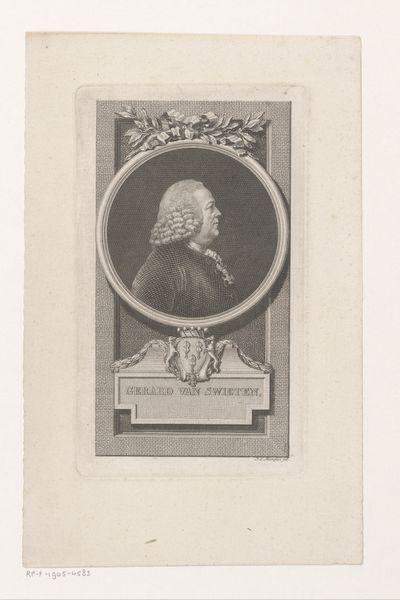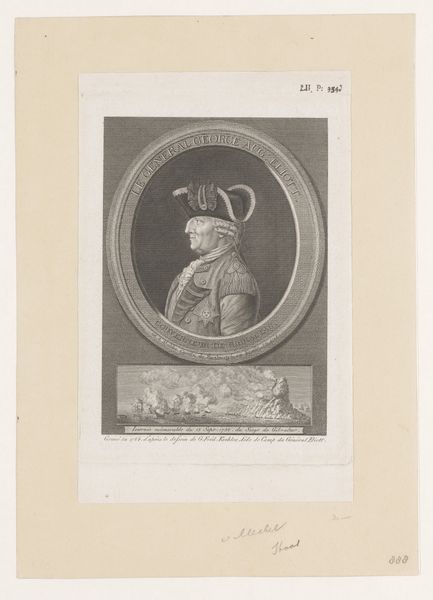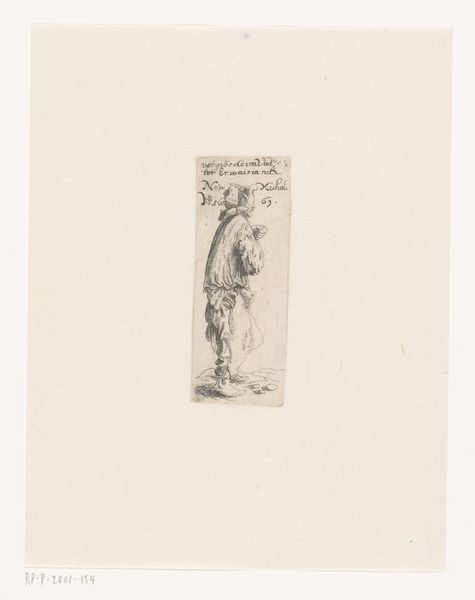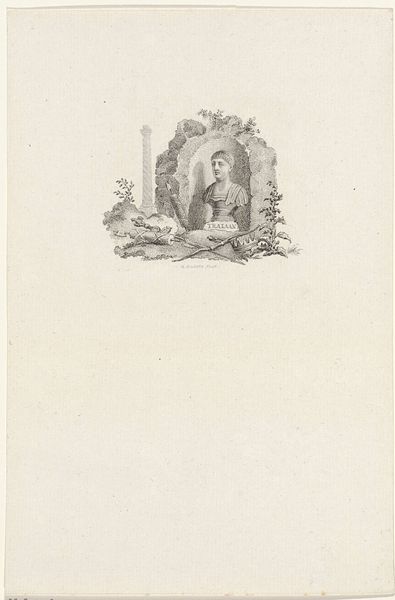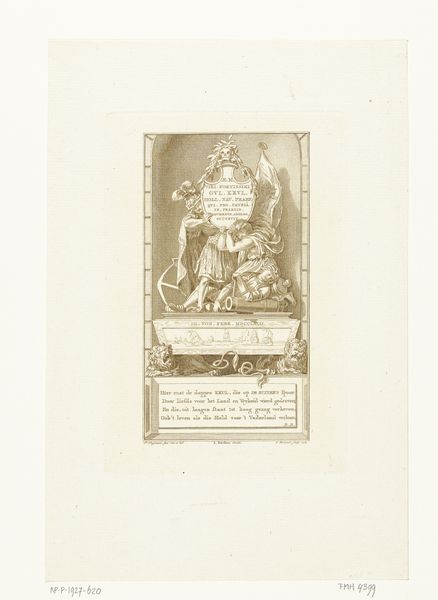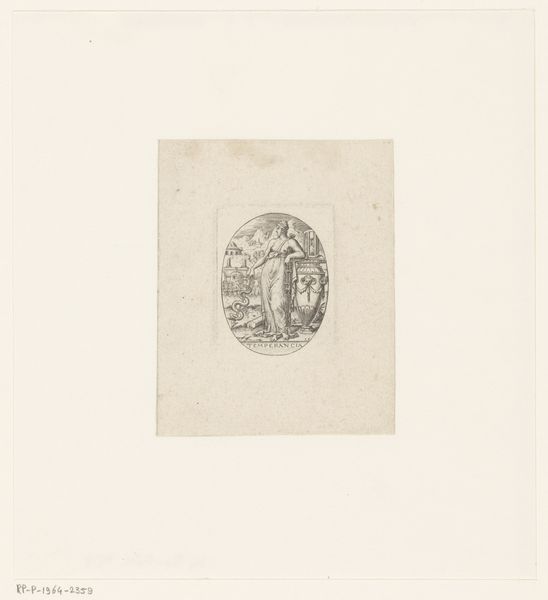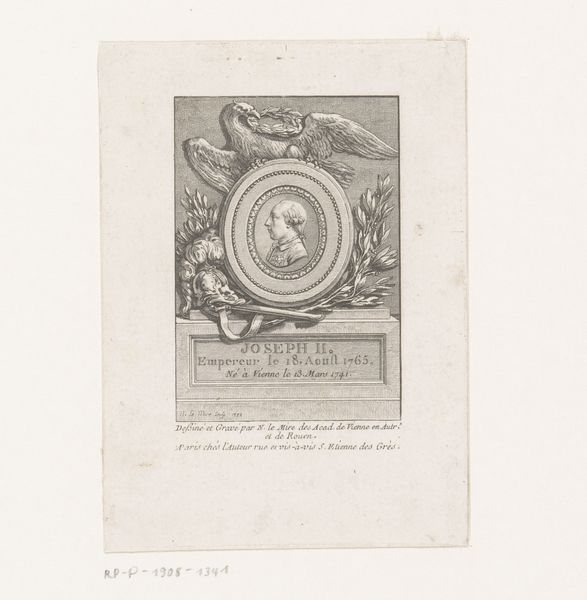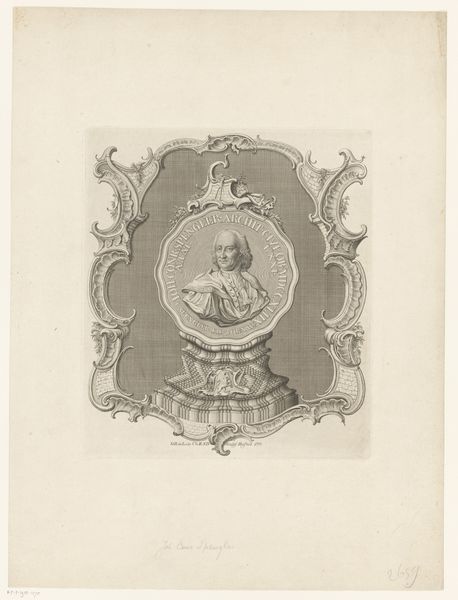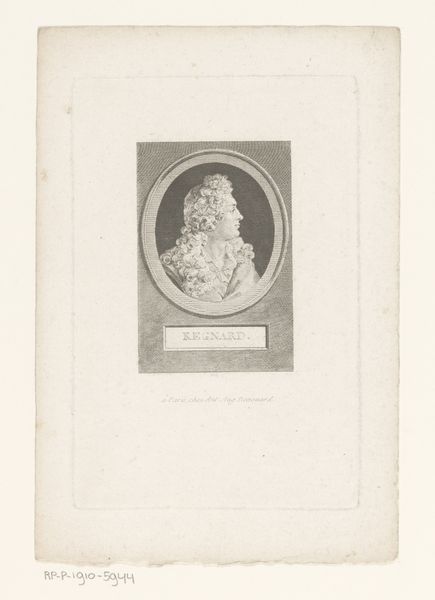
print, engraving
#
portrait
# print
#
old engraving style
#
line
#
history-painting
#
engraving
#
realism
Dimensions: height 181 mm, width 115 mm
Copyright: Rijks Museum: Open Domain
Editor: Here we have Daniel Nikolaus Chodowiecki's "Portret van Hawser Trunnion," created around 1785. It's an engraving, so a print. It feels very…detailed, almost obsessively so, in its linework. What's striking to you about this piece? Curator: As a materialist, I’m drawn to the engraving process itself. Consider the labor involved, the skill required to manipulate the metal plate, the physical act of carving these fine lines. What kind of tools were available, and how would those limit or influence the final outcome of the piece? Editor: That’s interesting! I hadn’t really thought about the labor involved. It’s so precise, it seems almost…mechanical. Curator: And that's precisely where it gets interesting. This precision speaks to emerging industrialization, wouldn't you say? It invites questions about who this print was for. Was it intended for mass consumption? A luxury item? Also, look at the choice to portray Hawser Trunnion in this manner - a circular frame evoking a coin. What does this formal choice suggest about how Trunnion was meant to be regarded, bought, or traded as a figure? Editor: I see what you mean. The portrait *is* presented almost like currency. It makes you wonder about the societal values attached to individuals, and how that ties into production. Curator: Exactly. The circulation of prints like these speaks volumes about the culture and economy of the time, about how images and ideas were disseminated. Thinking about the materials used – the metal, the ink, the paper – and the means of producing and distributing the final print brings social context into view, which impacts meaning itself. Editor: This conversation has totally shifted how I look at prints! Thanks! Curator: A pleasure. Now we can look beyond surface level to delve into production, labor, consumption...and perhaps challenge any sense of inherent hierarchy among visual outputs.
Comments
No comments
Be the first to comment and join the conversation on the ultimate creative platform.
